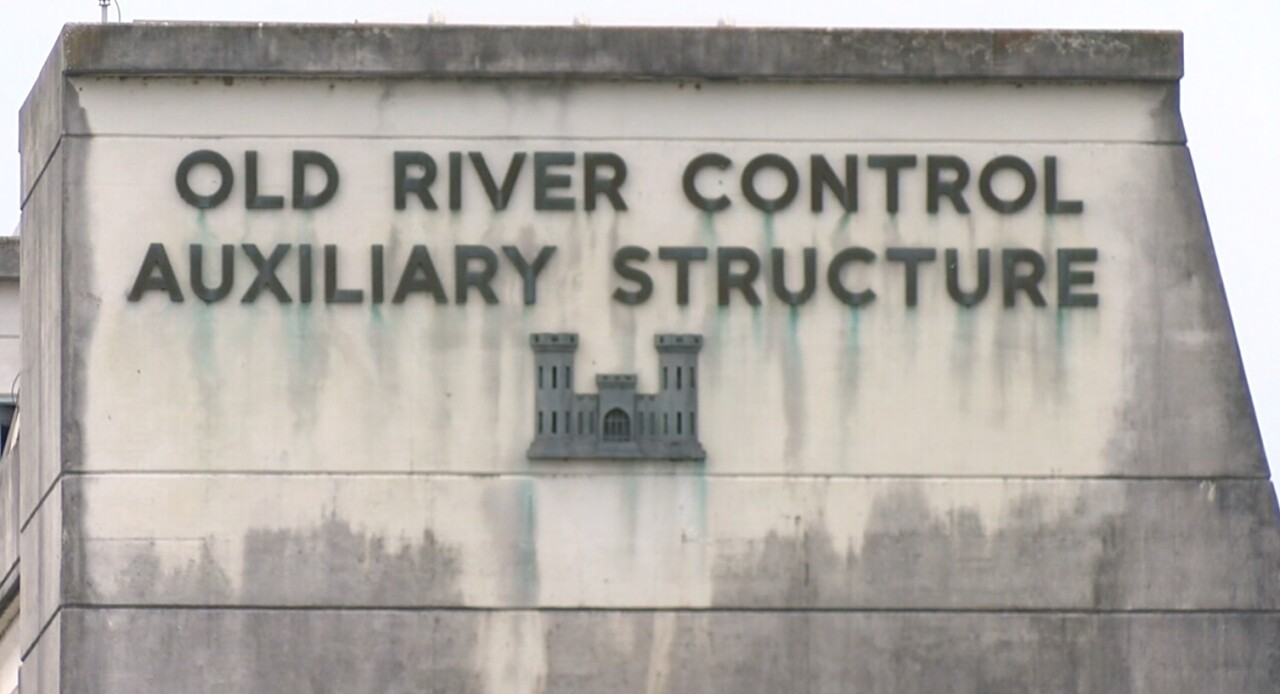In Louisiana, we embrace the water, but we also fight it. The Mississippi River is North America's largest river by volume, but it's always changing. Here in Louisiana, there's a place where man has control...for now.
Driving a lonely LA 15 in Concordia Parish, one may come along a series of huge structures. The Old River Structure is a true modern marvel. Because the Mississippi River is always trying to take the path of least resistance, there was a good chance it was trying to change course.

Matt Roe of the Army Corps of Engineers says, "When this structure was built in the 1950s, the Mississippi River was making a natural course change to go down the Atchafalaya which is the shorter route to the Gulf of Mexico."

And this would have devastating affects to our state and perhaps the entire country. Roe adding, "There's so much infrastructure along the Mississippi River south of here. You have the Port of Baton Rouge, the Port of South Louisiana, Port of New Orleans, Port of Plaquemines Parish, and that's a major economic driver for the state and the nation."

It sends 70% of the Mississippi's water down the main channel, while diverting 30% to the Atchafalaya. This, so far has kept both rivers in place. But it's not just protecting communities there. It also affects Acadiana. It keeps the Atchafalaya River flowing, with excess keeping the Atchafalaya Wetlands alive. It also helps to keep water flowing through Bayou Teche and the Vermilion River.

Just north of Krotz Springs is the Teche-Vermilion Pumping Station. It diverts over 1000 cubic feet of water per second westward toward Bayou Courtableau. From there the water flows toward Port Barre where the Bayou Teche is born. As the Teche flows toward Arnaudville, a weir allows some water to flow through Bayou Fusilier into the Vermilion River. Additional water is diverted from the Teche to the Vermilion via the Ruth Canal in St. Martin Parish.

Donald Sagrera, the Executive Director of the Teche-Vermilion Fresh Water District notes these diversions are needed, saying, "Whenever we're not getting sufficiant rainfall, the Vermilion River and Bayou Teche would revert to where it was in the 50s and 60s. There would be stagnation, there would be pollution and salt water intrusion."
But it all starts at the Old River Structure. There are other safety valves to keep it holding strong, such as the Morganza and the Bonnet Carre Spillways. So far, it's holding. Roe saying, "These structures are in great shape. They're performing as designed, and maintaining that 70/30 split.


